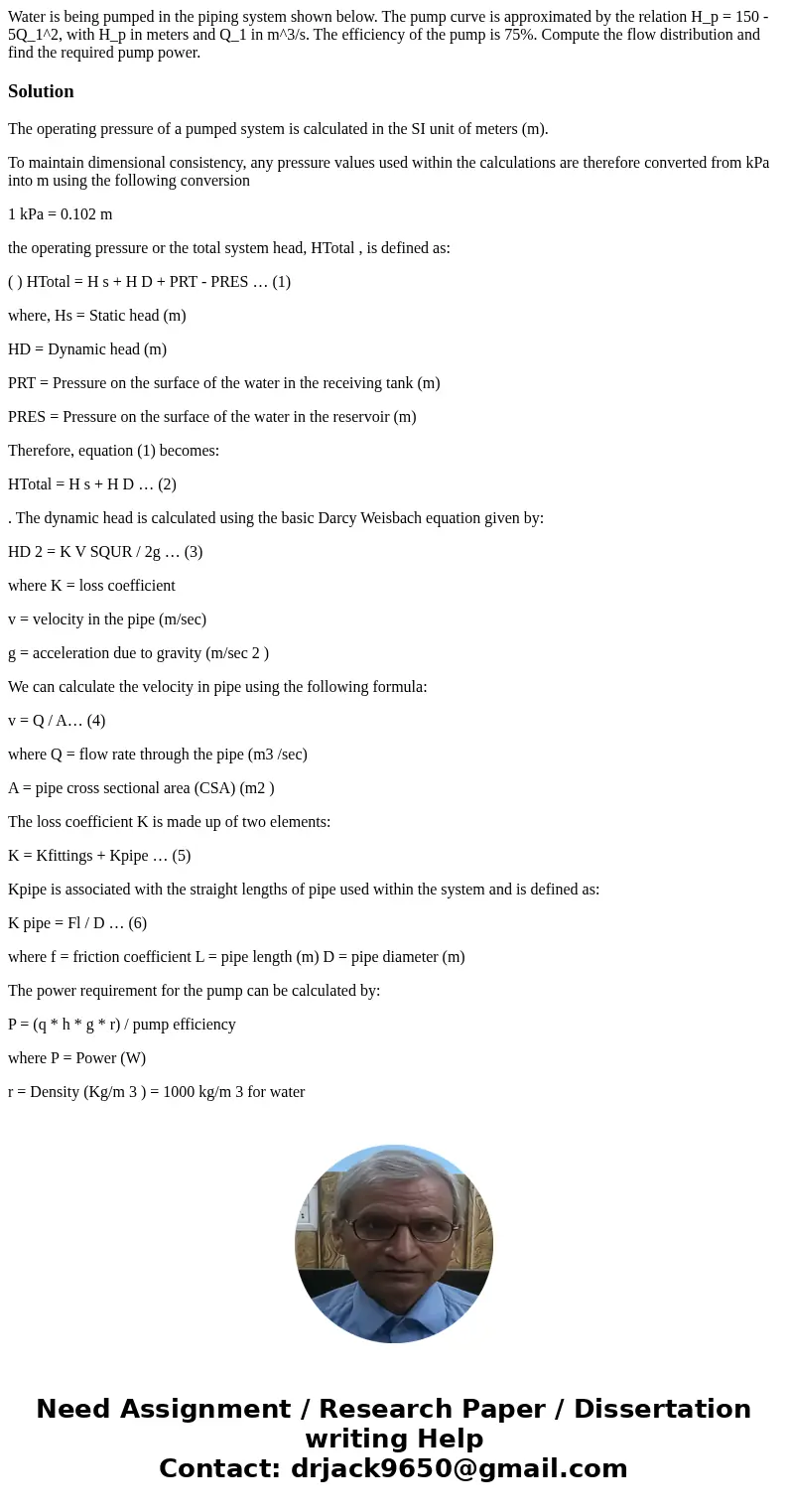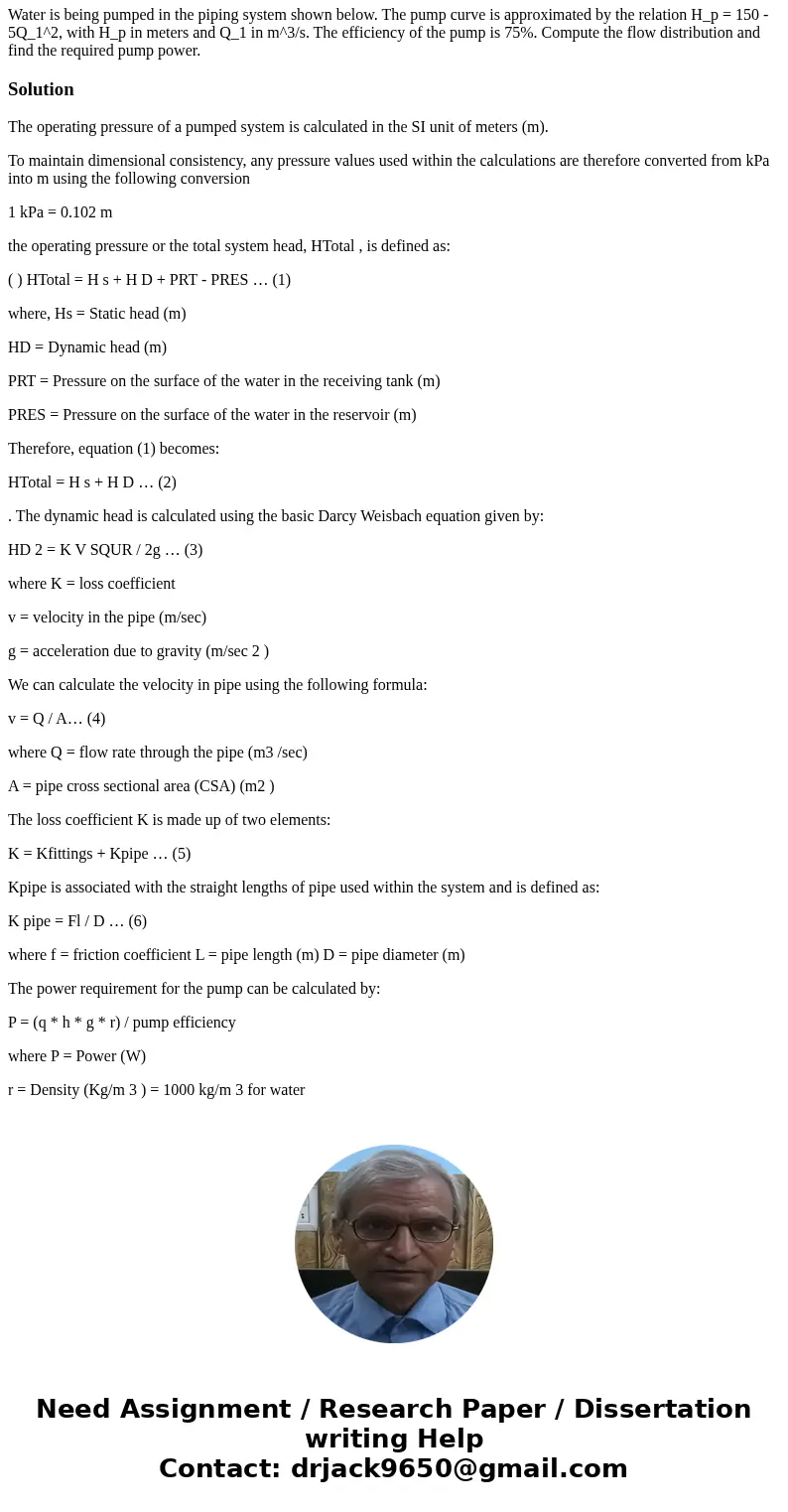Water is being pumped in the piping system shown below The p
Solution
The operating pressure of a pumped system is calculated in the SI unit of meters (m).
To maintain dimensional consistency, any pressure values used within the calculations are therefore converted from kPa into m using the following conversion
1 kPa = 0.102 m
the operating pressure or the total system head, HTotal , is defined as:
( ) HTotal = H s + H D + PRT - PRES … (1)
where, Hs = Static head (m)
HD = Dynamic head (m)
PRT = Pressure on the surface of the water in the receiving tank (m)
PRES = Pressure on the surface of the water in the reservoir (m)
Therefore, equation (1) becomes:
HTotal = H s + H D … (2)
. The dynamic head is calculated using the basic Darcy Weisbach equation given by:
HD 2 = K V SQUR / 2g … (3)
where K = loss coefficient
v = velocity in the pipe (m/sec)
g = acceleration due to gravity (m/sec 2 )
We can calculate the velocity in pipe using the following formula:
v = Q / A… (4)
where Q = flow rate through the pipe (m3 /sec)
A = pipe cross sectional area (CSA) (m2 )
The loss coefficient K is made up of two elements:
K = Kfittings + Kpipe … (5)
Kpipe is associated with the straight lengths of pipe used within the system and is defined as:
K pipe = Fl / D … (6)
where f = friction coefficient L = pipe length (m) D = pipe diameter (m)
The power requirement for the pump can be calculated by:
P = (q * h * g * r) / pump efficiency
where P = Power (W)
r = Density (Kg/m 3 ) = 1000 kg/m 3 for water


 Homework Sourse
Homework Sourse